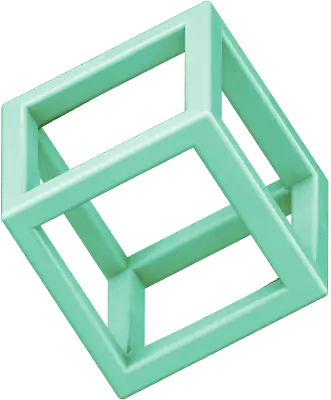“Why can’t I just stay on task like everyone else?” If you’ve ever asked yourself that, you probably have heard of ADHD and related to its symptoms. It’s easy to assign ADHD’s symptoms to forgetfulness, chronic disorganization, or stress.
If you wondered how online ADHD questionnaires work, you chose the right article. Whether curiosity, concerns, or just self-exploration drives you to take an ADHD symptoms test, a thoughtful quiz is a beneficial, low-pressure way to explore how your brain works.
What Does the ADHD Symptoms Test Explore In Adults?
Adult ADHD can be misunderstood, because it doesn’t always look hyperactive and only for children, as stereotypes suggest. Adults don’t run around and don’t interrupt when talking because they are more aware of social norms.
A high-quality quiz that will explore various life areas where ADHD traits may show up. For example, this science-informed ADHD questionnaire from Breeze takes into consideration that ADHD can show differently based on your upbringing and life conditions. Below are the key areas a well-designed ADHD symptoms test explores in depth.
1 – Attention & Focus
One of the core symptoms of ADHD is inconsistent attention. Neurodivergent people still can pay attention, but it’s inconsistent because it depends on various factors, from internal to external.
The test explores a person’s focus on boring, repetitive, or non-urgent tasks. Whether it’s present, and whether it doesn’t fall into hyperfocus. It will also ask you, whether noise and visual clutter can distract you if you’re working on a non-urgent task.
Another sign of ADHD that is frequently discussed in self-assessments is finishing things. Common questions will include whether a person has trouble finishing work that lacks stimulation (books or lectures) or whether a person often loses their train of thought during conversations.
For people with ADHD, attention difficulties turn into chronic patterns that interfere with daily life, especially when the stakes are low or deadlines are far away.
2 – Time Management & Organization
Executive dysfunction is one of the most important diagnostic factors for people with ADHD. Executive function skills help in planning strategies for handling projects, such as what steps are needed to get each project done. This part of the test helps distinguish whether a person:
- Underestimates how long something will take
- Is always a few minutes (or hours) late
- Leaves cluttered spaces, unfinished lists, or projects hanging
- Jumps between tasks impulsively without clear priorities [1]
This symptom cluster can also be referred to as “time blindness,” and it can leave people feeling overwhelmed or ashamed because they believe they should try harder.
3 – Impulsivity & Restlessness
Impulsivity isn’t always evident in adults, but it’s there. To tell if you have ADHD, a quiz can help you reflect on whether you tend to finish people’s sentences or make impulsive decisions that you might regret later.
Restlessness manifests differently in adults. For example, someone might bite their nails, shake their legs constantly, or play with their hair. It can also show up in sleep: Do you have trouble falling asleep, staying asleep, or waking up?
Although answering some of these questions might be difficult, the evaluation aims to make you honestly reflect on your behaviour. The more honest you are, the more accurate your results will be, and the more personalized tips you will receive.
4 – Inconsistent Performance
Some adults with ADHD feel confused by their own inconsistency. They know they’re capable, but their follow-through doesn’t always reflect that. One day, people with ADHD procrastinate and don’t feel like doing anything. On other days, they are on top of the world, catching up with all the deadlines and doing monthly work in one day.
It’s not an obvious symptom of ADHD, but inconsistency in performance or decision-making is linked to the reward system in the brain and the fact that it might be delayed for neurodivergent people [2]. Some ADHD symptom tests can ask about hyperfocus and burnout cycles that are frequent among ADHDers.
5 – Emotional Regulation
“How to tell if I have ADHD” quiz usually doesn’t focus just on poor attention. ADHD is frequently about emotions.
As people with ADHD can get overwhelmed easily, the test will explore frustration tolerance, mood swings, and the reasons for them. A shameful feeling is quite common for neurodivergent people because they feel that they function differently. If so, a test will point that out.
These emotional patterns might lead to shame and self-criticism, especially in adults who were never diagnosed as children and internalized their struggles as personal failings.
6 – Memory and Working Memory
Memory lapses in ADHD aren’t signs of cognitive decline. Because of the racing thoughts, working memory can be “overloaded”. Working memory is the brain’s short-term memory that allows it to quickly retrieve needed information [3]. For example, Breeze’s ADHD evaluation covers:
- Frequently losing objects or forgetting what you were about to do
- Walking into rooms and forgetting why
- Struggling to retain verbal instructions or remember appointments
7 – Symptoms Across Life Domains
One of the key distinctions of ADHD is that symptoms are not isolated. According to the DSM-5, to meet diagnostic criteria, symptoms must reduce the quality of functioning in at least two settings (e.g., work, home, school, or social situations) and be persistant since childhood.
The Breeze ADHD symptoms test includes reflective prompts about one’s childhood and functioning in multiple areas. A self-assessment like this isn’t meant to diagnose, but it can open the door to understanding why certain patterns repeat and whether they point toward ADHD.
What Makes a Good ADHD Questionnaire for Adults?
If you’ve ever clicked through random “How to tell if I have ADHD?” quizzes, you might have noticed that a lot of them felt vague, overly simplified, or just focused on childhood hyperactivity. A truly helpful ADHD questionnaire for adults needs more depth.
Here’s what separates a meaningful assessment from a clickbait checklist:
- Science-backed content. A solid test is grounded in clinical research, like the DSM-5 diagnostic criteria and studies on adult ADHD. For example, Breeze’s ADHD symptoms test is based on the Adult ADHD Self-Reporting Scale (ASRS).
Good test should cover more than just hyperactivity. Potential questions can concern executive functioning, emotional regulation, and time management as they are core symptoms of adult face of ADHD.
- Developed with experts. Look for questionnaires created or reviewed by licensed psychologists. A reliable test reflects the complexity of ADHD, not just a list of common stereotypes.
- Trauma-informed & judgment-free language. A good questionnaire won’t make you feel broken. It uses inclusive language that recognizes how gender, culture, or childhood environments may shape how ADHD presents. It won’t rush you to uncover more sensitive topics, but it will challenge you enough so that you can reflect on your past.
- Comprehensive, yet clear. The most effective tests are brief but thorough. Ideally, they take 5-10 minutes and provide a summary of your results, highlighting patterns and themes worth reflecting on.
References:
- Executive Dysfunction? Signs and Symptoms of EFD. ADDitude. ADHD Science & Strategies by Janice Rodden. January 2021.
- Symptoms of Attention Deficit/Hyperactivity Disorder Are Associated with Sub-Optimal and Inconsistent Temporal Decision Making. Brain Science Journal. By O. Gabrieli-Seri, E. Ert, Y. Pollak. September 2022.
- ADHD and Memory Challenges: The Top Science-Backed Ways to Boost Your Memory. Attention Deficit Disorder Association. September 2023.


